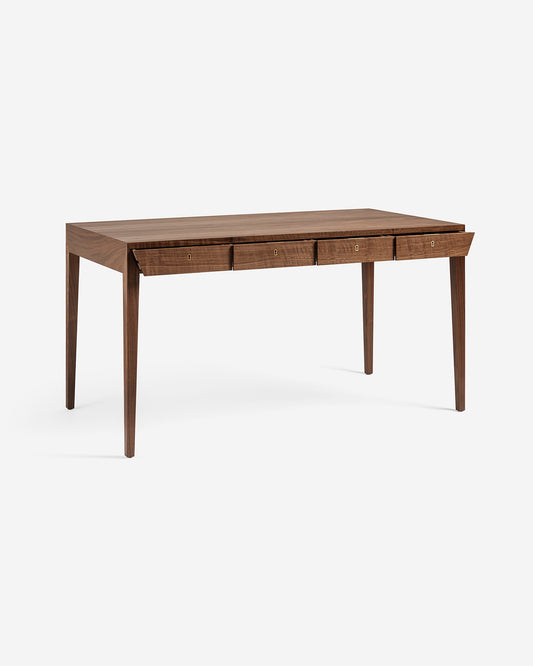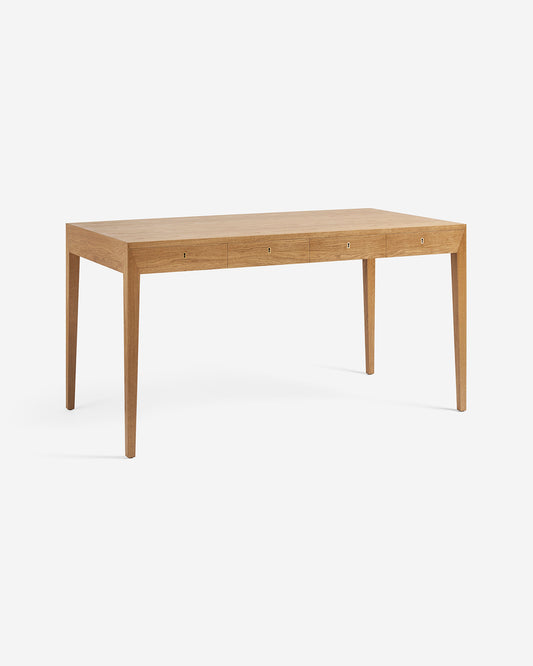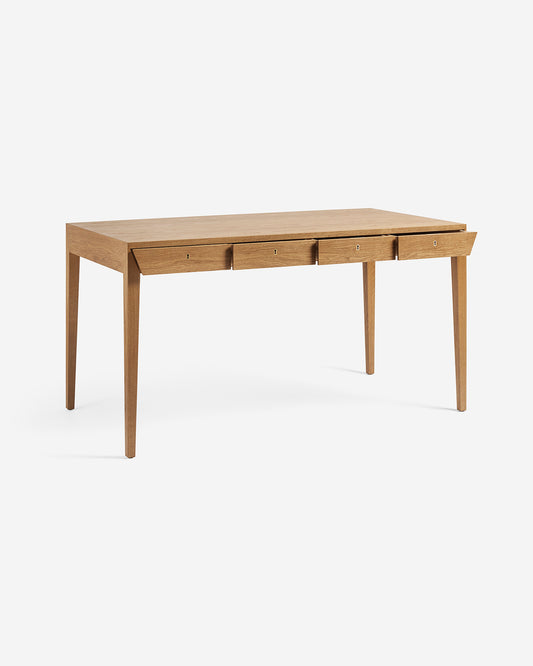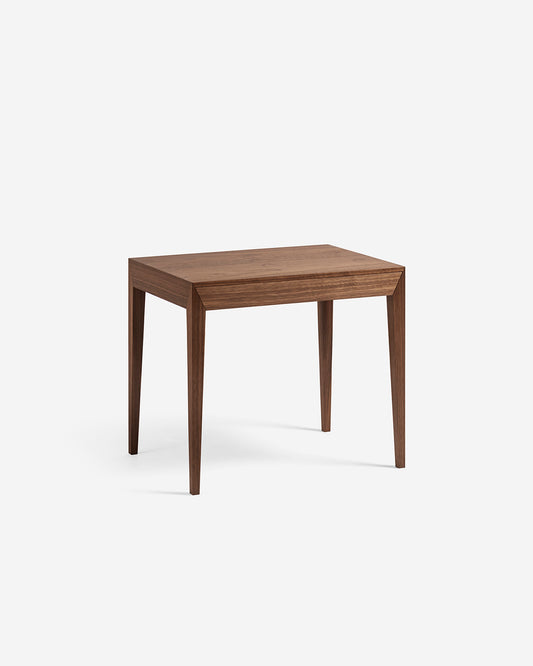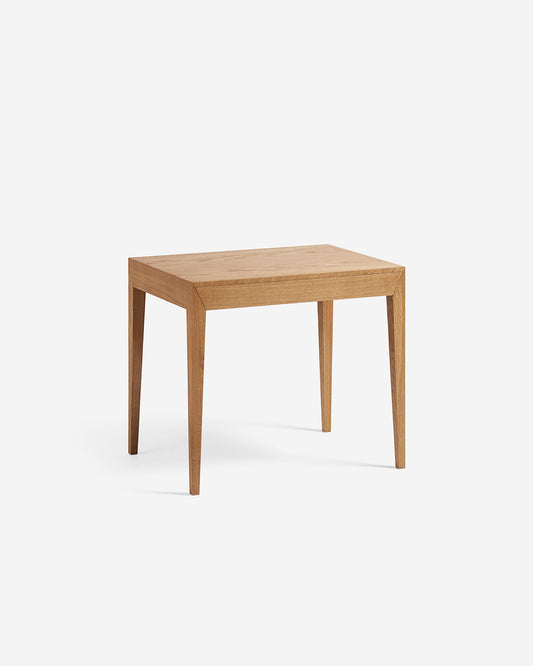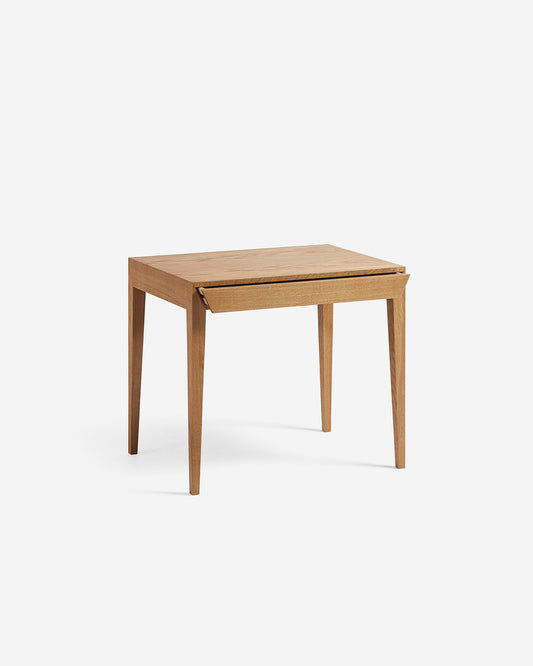A Life Less Ordinary. The Story of Severin Hansen Jnr.
Many Danish furniture designers of the 20th century strove to create a novel style that they could claim as their own. Finn Juhl's armchairs are noteworthy for the biomorphic nature and flowing curves of their wood frames. Helge Vestergaard-Jensen found a way to integrate nylon string as decorative webbing. Arne Vodder is remembered for his distinctive scalloped cabinet drawer fronts. But no one has built an entire oeuvre on a single, iconic trademark like Severin Hansen Jnr.
A leg joined to a table top by a neat, triangular three-way mitre, this is Severin Hansen. The design is unmistakable. The complex joinery detail was virtually unseen in Danish design before Hansen’s first application in 1958. As a young furniture maker following in his father’s footsteps, he designed a series of tables and desks, (most notably the Model 36) that would go on to become some of the most recognisable and popular pieces from the Mid-Century period.
But the man who created them was not a trained cabinetmaker or architect like most of the successful designers of his generation. He was a natural talent with a gift for imagining furniture that was both pleasing to the eye and stood out from the crowd.
 Model 36 Desk in Rosewood
Model 36 Desk in Rosewood
Generations of Furniture Pedigree
His talent, however, did not come about by chance. Severin Hansen Jr. was born in 1936 in Copenhagen under the name Erik Severin Risager-Hansen into a family of dedicated furniture people. His grandfather was a highly skilled cabinetmaker. His father, Hans Severin Hansen, also started out as a cabinetmaker before carving out a successful career as one of the most colourful furniture salesmen in Denmark. Hansen Snr. managed a showroom in Copenhagen, working with some of the biggest dealers and manufacturers in the country. From this location he sold furniture by brands such as Slagelse Møbelværk, and the much smaller Haslev Møbelsnedkeri, in which he had been a shareholder since 1953.
Based in the town of Haslev, some 30 miles south of Copenhagen, this furniture factory provided a second source of income for Hansen Snr. as well as an outlet for his creative urges. He was good friends with the founders, cabinetmakers Henry Aunbirk and Knud Windahl, who produced furniture that Hansen Snr. had designed in his spare time. One of his best-selling pieces was the Bridge floor lamp, inspired by his three sons and conceived in 1950.
A Natural Flair for Design
It was Erik, the youngest of the Hansen brothers, who demonstrated a lasting interest in furniture design. Shortly after leaving school, he started to work in the factory at Haslev and made an instant impact as a budding designer. Erik’s flair for design manifested itself in the use of clean lines and geometric shapes, which combined to create a unique modernist style all of his own.
In 1957 at the age of just 21, Erik became chief designer at Haslev Møbelsnedkeri. Within a year he had presented the finished range of tables that would confirm his place in the top tier of Danish Modern designers. This groundbreaking collection featured the Model 36 desk, a dining table, side tables and a dressing table, all with the 3-way mitred corner. His technical skill was limited at this stage of his career so all of the models were simply drawn on large pieces of paper.
The tables were an instant commercial success and ensured that Haslev could continue to grow and find new audiences for their products, especially in the burgeoning American market. Severin’s modernist aesthetic struck a chord with affluent homemakers in cities such as New York where they could be found in the showroom of exclusive Manhattan retailer George Tanier.
 George Tanier catalogue c1960s
George Tanier catalogue c1960s
Continued Success Through Creative Evolution
In 1964 Erik evolved his trademark tables further by creating a more complex rounded three-way corner joint for a new collection of tables. It was at this point in his career that he started to go by his full names: Erik Severin Hansen and Erik Risager-Hansen. This allowed him to distinguish his work further from that of his father and provide variety for Haslev’s marketing. Around the same time, Erik breathed new life into his first collection of tables thanks to a collaboration with renowned Danish porcelain manufacturer: Royal Copenhagen. These new versions of the tables were decorated with Nils Thorsson's tile designs and went on to become international bestsellers thanks in part to wider distribution through Royal Copenhagen's flagship stores.
 Cabinetmaker Knud Windahl working on a Royal Copenhagen tiled table
Cabinetmaker Knud Windahl working on a Royal Copenhagen tiled table
Erik engaged in many pursuits outside of furniture making throughout his life, most notably in motor racing where he reached the pinnacle of competing in the Monte Carlos Rally of 1962. By 1969 he became co-owner of Haslev Møbelsnedkeri. However, the company was sold four years later in 1973 as the demand for primarily wood furniture receded across Europe and the USA, spelling the closure of most of the great Danish factories from the previous decades. The new owners of Haslev changed direction and Severin Hansen's design career came to an end as a result in 1978 when he eventually left the company.
He spent the last years of his life in Rørvig, a small coastal town in the Zealand region of Denmark. He enjoyed a simple retirement, living above an inn where the painter and designer Björn Wiinblad had also lived and worked for some time in previous years. Erik Severin Risager-Hansen died in 2020 at the age of 84.



